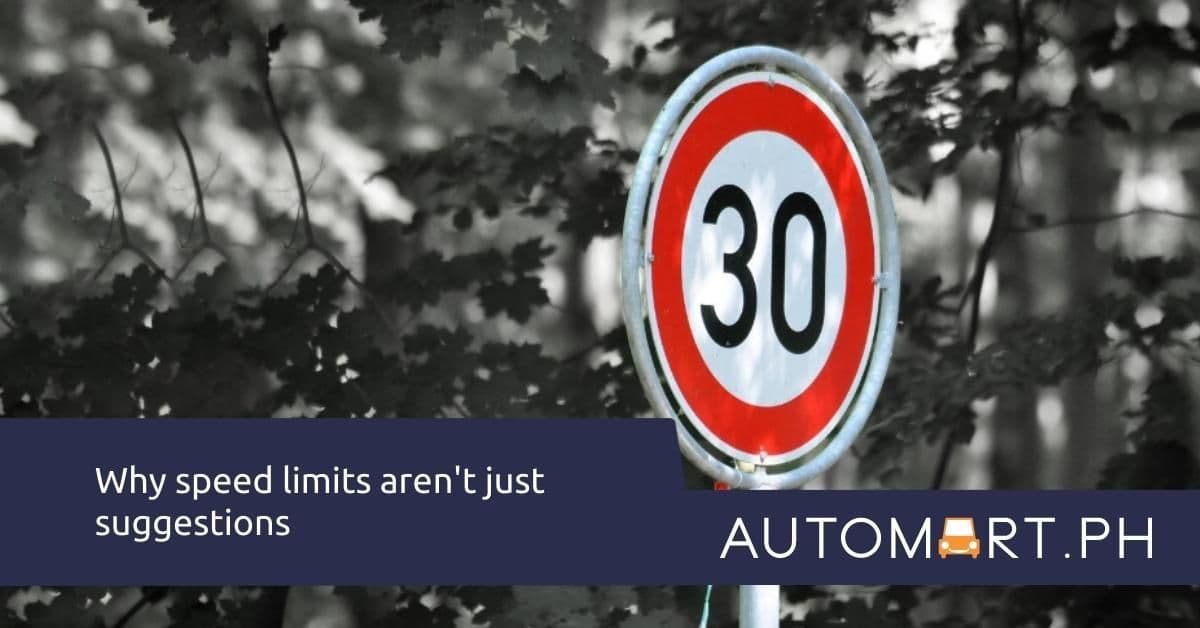
Why speed limits aren’t just suggestions
Updated on December 17 2025
By Melvin Magadia for Automart.PH
METRO MANILA, – Driving along the expressway on an early Sunday morning can tempt any driver to step on the gas pedal and run well past 100 km/h.
But before doing so, think twice because driving too fast can lead to crashes involving injuries or even deaths. Exceeding the designated speed limit is one of the common causes of road-related deaths in the Philippines, according to data from the Metropolitan Manila Development Authority.
Statistics from the World Health Organization reveal that when speeds increase from 50 km/h to 65 km/h, pedestrians are 4.5 times more likely to be killed in a collision. In addition, the risk of fatality for car occupants in side impacts at 65 km/h is 85%.
But speed limits are nothing new in the Philippines. These are stipulated in Republic Act 4136 or the “Land Transportation and Traffic Code.”
Why speeding is dangerous
Scientists from the University of Adelaide revealed that driving even a few kilometers per hour above the speed limit increases the risk of a crash.
They found that the risk doubled for every 5 km/h above 60 km/h. In addition, the study also states that the car can become difficult to control at higher speeds based on Newton’s First Law of Motion.
During a road crash, the faster a vehicle is traveling at the time of impact, the more severe the injuries to the drivers, passengers and pedestrians involved. Speeding increases the risk of crashing for several reasons:
- Less time to notice and react to hazards
- Stopping distance is longer
- Higher risk of losing control
- Increases the risk of dangerous driving behavior, such as weaving through traffic or not stopping at red lights
Don’t push the limits
Speed limits are there to keep people from stepping too much on the gas pedal. Under R.A. 4136, here are the designated speed limits, depending on the type of road you are driving.
Open Country Road
Open country roads have limited or no foot traffic nor are they surrounded by commercial or residential properties. Open country roads include large provincial roads and some national highways.
- Buses, Trucks, Similar Vehicles – 50 km/h
- Cars and Motorcycles – 80 km/h
Through Streets
These roads are often located in areas or boulevards with limited or no blind corners and little traffic. Examples include villages and subdivisions where traffic is strictly monitored.
- Buses, Trucks, Similar Vehicles – 30 km/h
- Cars and Motorcycles – 40 km/h
City and Municipal Streets
These roads have light-to-moderate traffic and also include roads not belonging to the second category.
- Buses, Trucks, Similar Vehicles – 30 km/h
- Cars and Motorcycles – 30 km/h
Crowded Streets
Crowded streets cover school zones, intersections, markets and roads with many stationary cars and blind corners.
- Buses, Trucks, Similar Vehicles – 20 km/h
- Cars and Motorcycles – 20 km/h
If you are flagged for exceeding the speed limit within Metro Manila, authorized enforcers can penalize violators. If you are stopped by the MMDA, the fine could range between P1,200 to P2,000.
It might be tempting to rev up your car’s tachometer, but you need to be aware of the dangers that lie ahead if you do so. Aside from that, the police will be right on your tail and asking for your license.